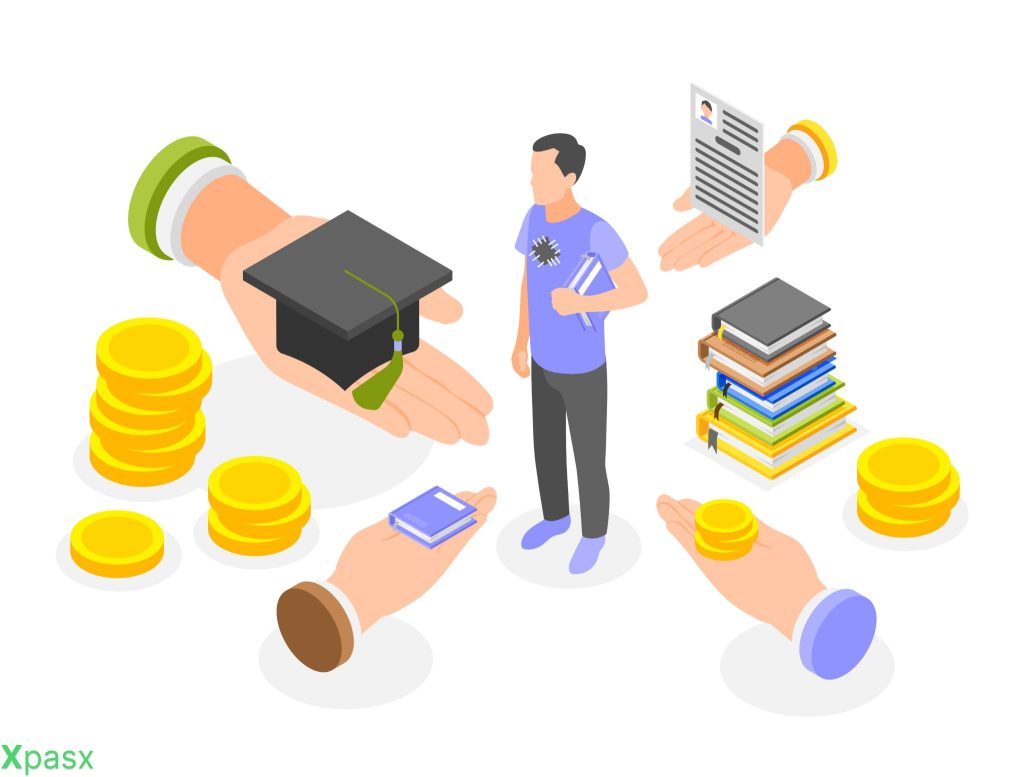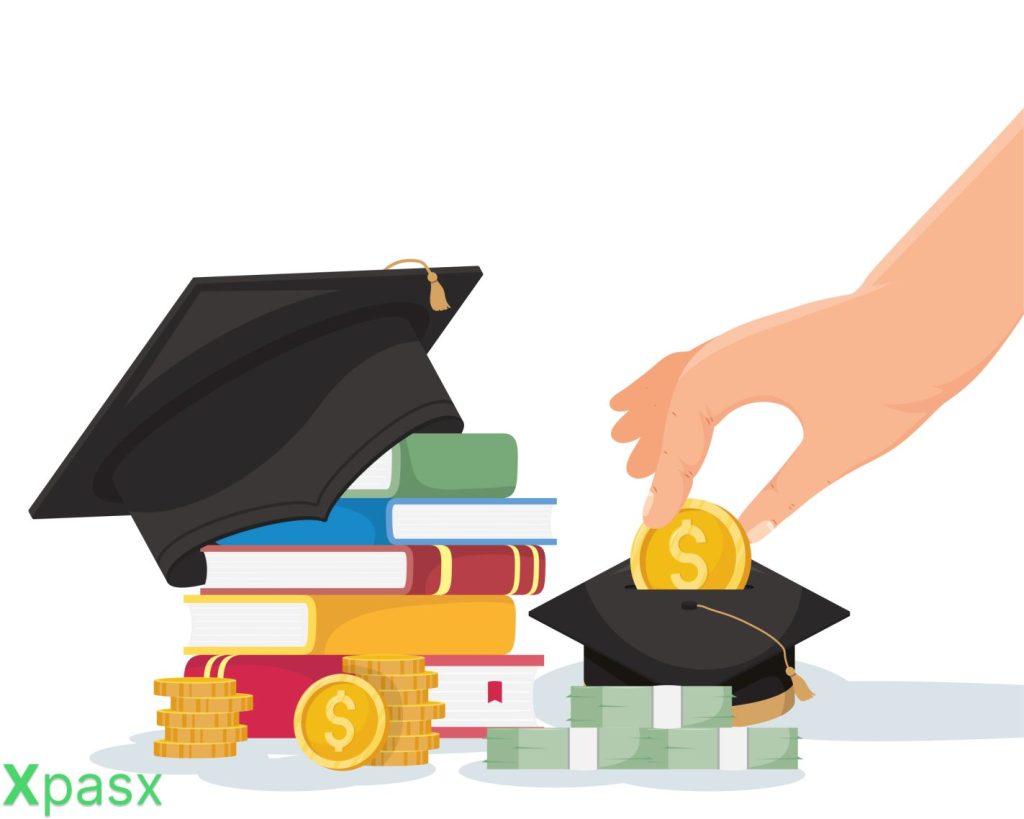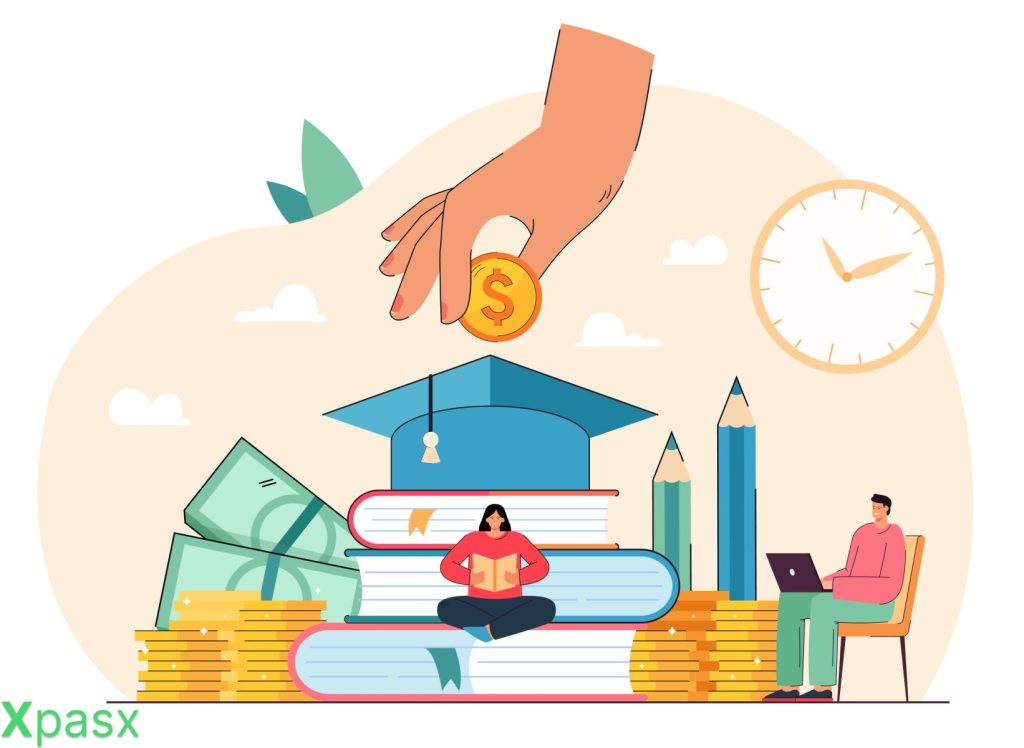Table of Contents
Loans for Students

Student loans are assistance aimed at supporting students in meeting their expenses. They usually come with interest rates compared to loan options and offer more flexibility when it comes to repayment.
Students often rely on student loans to finance aspects of their education, such, as tuition, fees, accommodation, books, and daily living costs. It’s crucial for students to make decisions, about their borrowing choices and only take out what is necessary to reduce the burden of repayment post-graduation.
In this article on xapsx, we will discuss loans for students in detail.
Understanding loans for students
Breaking down loans for students can help you grasp an understanding of the topic.
Student loans are crafted with the aim of assisting people in funding their pursuits. They are meant to cater to a range of costs associated with schooling, such, as tuition fees, accommodation, books, materials and, at times living expenditures.
Types of Student Loans:
Government-backed student loans, such, as Direct Subsidized Loans, Direct Unsubsidized Loans, and Direct PLUS Loans usually come with interest rates and greater repayment flexibility than loans.
Private student loans are provided by institutions, such as banks, credit unions, and online lenders. These loans come with a range of interest rates, repayment choices, and requirements, for eligibility. They could be considered by students who have used up their loan opportunities or require financial assistance.

Federal student loan interest rates are determined by Congress. Usually remains constant throughout the loan term. In contrast interest rates, for student loans may. Are influenced by factors, like the borrowers’ credit history and the lenders’ guidelines.
Repayment Options:
Federal loans provide repayment options such, as standard, graduated, and income-driven plans. The income-driven plans adjust payments based on the borrowers’ income and family size. On the other hand, private loans offer varying repayment choices depending on the lender. However, they might not be as flexible, as loans. Borrowers should thoroughly. Comprehend the terms and conditions of loans before taking them out.
Loan Forgiveness and Discharge; Certain federal student loans might qualify for forgiveness. Discharge based on situations, like working in public service or facing total and permanent disability. Unlike loans private loans generally do not provide forgiveness opportunities.
Credit Impact; Both federal and private student loans can influence the borrowers’ credit history and credit score. It’s important to ensure payments to prevent effects on credit.
Responsible Borrowing; Students should only borrow what is necessary. Explore financial aid options such as scholarships, grants, and part-time work before resorting to loans. Having a grasp of the loan terms, including interest rates, repayment choices, and total repayment amounts is vital, for making informed borrowing decisions.
In general student loans are useful, for financing education. They also carry obligations and possible lasting financial effects. It’s crucial for borrowers to thoughtfully evaluate their choices and handle their loans prudently to reduce debt and guarantee repayment.
Lorem ipsum dolor sit amet consectetur adipisicing elit. Quam obcaecati vel ad unde est illo at. Labore excepturi officia dolores!
+1 (513) 312-2569

How can a student apply for loans for students?
Getting a student loan requires going through steps, which largely depend on whether you’re seeking federal or private student loans. Here’s a basic overview of the process, for obtaining a student loan;
For federal loans for students:
To check if you qualify; Your eligibility, for student loans mainly depends on factors like need, enrollment status and citizenship. Private student loans might have requirements such, as credit history and income verification.
Complete the Free Application for Federal Student Aid (FAFSA):
To apply for student loans and other financial assistance you must complete the FAFSA form. This document gathers details, about your family status to assess your qualification for aid schemes. It’s crucial to fill out the FAFSA and send it in on time to enhance your access, to financial aid opportunities.
Review Your Financial Aid Offer:
Once you complete and send in your FAFSA your school’s financial aid office will send you a breakdown of the assistance to you. This will include details, on grants, scholarships, and federal student loans that you qualify for.
Accept or Decline the Loan Offer:
When federal student loans are offered to you take the time to go through the terms before deciding whether to accept or reject the loan. It’s important to think about the amount you require to borrow and any additional charges or interest rates involved.
Complete Entrance Counseling and Sign a Master Promissory Note (MPN):
Before you can get student loans you usually have to do entrance counseling. This will give you details, about the loan terms how to pay back the money, and what your responsibilities are, as a borrower. You’ll also have to sign an MPN, which is a paper where you agree to follow the rules of the loan.
Receive Disbursement:
After fulfilling all the conditions your school will transfer the loan money to your account to take care of tuition fees and other educational costs. If there are any funds left over once these expenses are settled you will receive a refund to cover expenses.
For private student loans:
Research Lenders:
Explore lenders providing student loans and make a comparison of their interest rates, repayment plans, and qualifications. Take into account aspects like the need, for credit score options for having a cosigner and any perks available, to borrowers.
Submit an Application:
Please fill out the application, for a student loan by sharing details, about your finances, educational costs, and enrollment status. If you don’t meet the credit criteria on your own you might have to involve a cosigner.
Undergo Credit Check:
When you apply for a loan, lenders usually check your credit history to evaluate how creditworthy you are and to decide on the loan terms, such, as the interest rate.
Review and Sign Loan Documents:
If you are given the light, for a private student loan make sure to go over the terms and conditions of the loan, such, as interest rates, repayment choices, and any associated fees. Then sign off on the loan agreement (which is commonly done electronically) to confirm your acceptance of the loan offer.
Receive Disbursement:
Private loan funds, like loans, are sent by the lender to your school to pay for expenses. If there are any funds left they are usually returned to you for expenses.
Make sure to borrow and only request the amount to manage your educational costs. It’s crucial to grasp the loan terms and your obligations, as a borrower, for a repayment process.
What kind of student loan should you apply for?
Determining the student loan for you relies on different aspects, such, as your unique financial status, academic aspirations, and personal choices. Let’s compare private student loans to assist you in deciding which option could work best for your situation;
Federal loans for students:
Interest Rates; Federal student loans usually come with set interest rates providing a foreseeable monthly payment plan.
Income-Based Repayment Plans; Federal loans offer repayment plans based on your income adjusting your payments according to your earnings and family size. These plans can be especially helpful if you expect a lower income post-graduation.

Loan Forgiveness and Discharge Options; Certain federal student loans could qualify for forgiveness. Discharge under conditions like working in public service or facing total and permanent disability.
Deferment and Forbearance Choices; Federal loans provide options, for deferment and forbearance allowing you to temporarily halt or lessen your payments in case of difficulties or when returning to education.
No Need for Credit Check or Cosigner; The majority of student loans do not necessitate a credit check or cosigner making them accessible to individuals, with a credit history or income.
Private Loans for Students:
Private student loans often come with two types of interest rates; fixed and variable. Although variable rates may start off lower, than fixed rates they can fluctuate over time depending on market conditions.
Options, for having a cosigner; In loans, it’s common to have a cosigner, who can assist individuals, with a credit history or income in obtaining a loan or getting a better interest rate.
Private loans provide you with the flexibility to select from repayment options, such, as making payments paying only the interest while in school or deferring payments until, after graduation. This gives you control over how you manage your loan repayments.
Private loans might provide the opportunity to secure amounts compared to loans, which could potentially cover all your educational costs.
When applying for loans a credit check is usually necessary. The interest rate offered might be based on your credit score. Individuals, with credit scores could potentially access interest rates.
Federal student loans are usually seen as advantageous because of their interest rates, repayment plans based on income, and safeguards, for borrowers. On the hand, private student loans can serve as an alternative for those who have used up their aid or require extra funds, for educational costs. Before deciding it’s crucial to assess the terms and advantages of both private loans. Borrow responsibly to keep debt in check and ensure a repayment process.
Lorem ipsum dolor sit amet consectetur adipisicing elit. Quam obcaecati vel ad unde est illo at. Labore excepturi officia dolores!
+1 (513) 312-2569

Bottom Line
Student loans are tools created to assist students in covering their expenses. There are two categories of student loans; private. Federal student loans, supported by the government provide fixed interest rates, repayment plans based on income, and various protections, for borrowers like loan forgiveness and deferment options. These loans do not require a credit check or a cosigner making them accessible to a range of students. Additionally, federal loans may be subsidized, meaning the government covers the interest while the borrower is, in school.
In contrast, private student loans are offered by banks, credit unions, and other financial institutions. They may come with variable interest rates and flexible repayment terms. Private loans typically involve a credit check with the interest rate determined by your creditworthiness. Many private loans also allow for a cosigner to help borrowers qualify for a loan or secure interest rates.
When it comes to choosing between student loan options it’s crucial for borrowers to carefully consider the pros and cons of each type. Federal loans are often favored for their fixed interest rates, repayment plans based on income, and borrower protections.
Private loans might be a choice, for students who have used up their aid or require more money for school costs. It’s important to borrow by taking out what is necessary to avoid excessive debt and ensure you can repay successfully. Knowing the loan terms and looking into financial aid avenues, like scholarships and grants can also lower the amount borrowed for education.
- Loans for students are a kind of loan, if you wish to learn more about loans visit our page on loan.